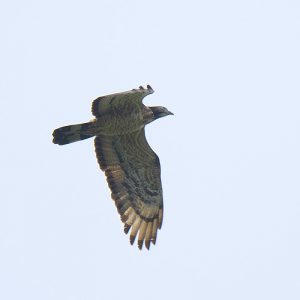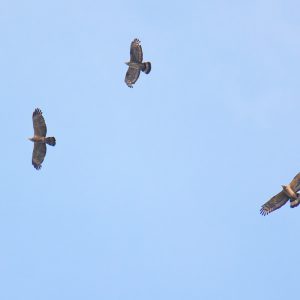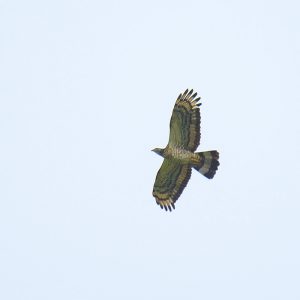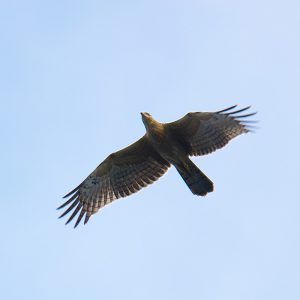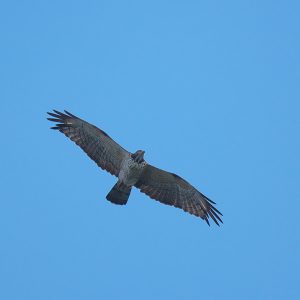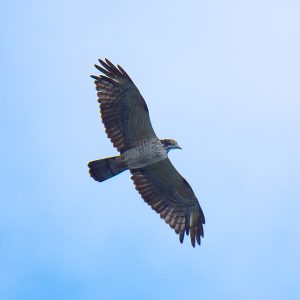むなかたが集まる
電子データベース
電子データベース
ハチクマ
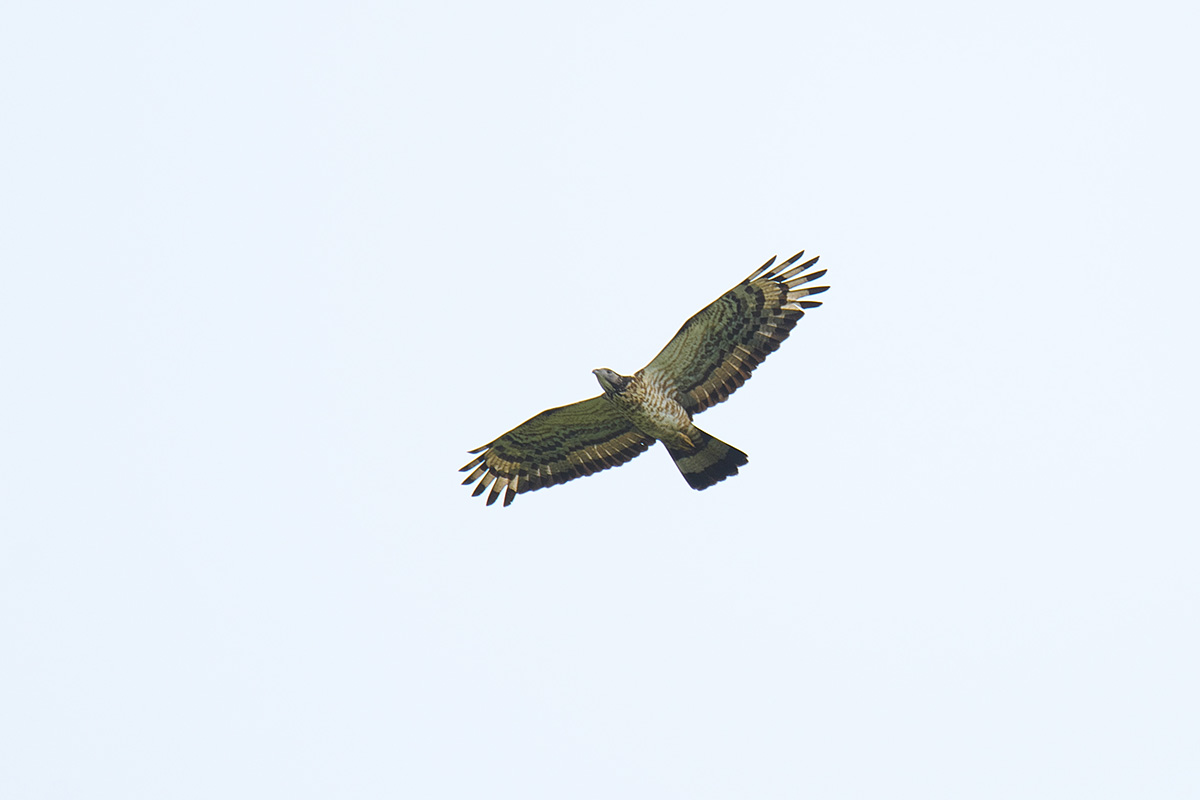
| 種目 | ハチクマ (八角鷹,蜂角鷹) | 分類 |
タカ目 タカ科 ハチクマ属 |
学名 | Pernis ptilorynchus | 英名 | Honey Buzzard |
|---|---|---|---|---|---|---|---|
|
ハチクマ (八角鷹,蜂角鷹) |
タカ目 タカ科 ハチクマ属 |
Pernis ptilorynchus | Honey Buzzard |
宗像市でみられる場所・時期
宗像では旅鳥として,春秋の渡りの時期に見る機会がある。どちらかと言えば,秋の渡りの時期に見ることが多い。時期としては9月から10月初旬にかけてである。
秋には北九州方面から飛来し,上昇気流を求めて田圃の上空で旋回する姿を見ることができる。また夕刻には四塚連山や許斐山などの山間地域でねぐら入りをして翌日上昇気流が生じた頃に塒だちをする姿を見ることがある。
特徴
全長は雄57㎝,雌は61㎝ほどであり,トビと同じような大きさである。雌雄はほぼ同色であるが,翼の模様は様々で個体差が大きい。
雌雄に関係なく,体上面は黒褐色か褐色が普通である。体下面と下雨覆の羽色は白色の淡色型から黒褐色の暗色型がある。更にその中間型や無斑で白っぽいものもいる。尾は長めで円尾。
雄成鳥は,風切り先端に太い2本の黒色帯がある。顔は灰色みがあり,虹彩は暗色で赤みを帯びる個体もいる。
雌成鳥は,尾に雄より細い2~3本の黒褐色帯がある。虹彩は黄色で,飛翔時翼の幅が広く頭頸部が他の鷹類に比較してより突出して見える。
習性
平地から山地の森林などで生活し,営巣は毎年同じ場所で行う。
昆虫類や両生類,は虫類を食べ,繁殖期後半はクロスズメバチをよく捕食する。蜂に襲われても羽衣が堅く針が通らないので,蜂を補食することができると言われている。
近年,渡りのルートが徐々に判明してきた。
九州北部を中心に見ると,春はインドネシアやインドシナ半島から中国大陸,朝鮮半島経由で九州に到達し,関門海峡から本州に渡る。秋は,関門海峡から九州を縦断し南西諸島を経由して台湾に至り,インドシナ半島,インドネシアに至る。
分布
夏は,九州以北の日本列島(中部地方以北が多い。),沿海州などで繁殖し,冬はインド亜大陸,インドシナ半島,インドネシアなどで過ごす。渡らずに,インド亜大陸,インドシナ半島,インドネシアなどで繁殖する個体もいる。
その他
渡りの季節になると,北九州市の風師山,皿倉山,福岡市の油山展望台などで,渡りを観察するためカメラマンが集結する姿をよく見かける。
 はじめに
はじめに お問い合わせ
お問い合わせ